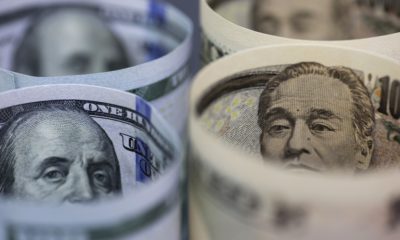Yields on Japan’s benchmark 10-year government bond fell below zero for the first time, as investors clamor for safe-haven assets in the wake of a global market rout.
The yield on the 10-year Japan government bond (JGB) dropped as low as negative 0.007 percent. The fall came on the heels of a global stock market sell-off overnight that likely spurred safe haven flows back into Japan. Bond prices move inversely to yields.
The U.S. five-year Treasury yield also fell to around 1.1112 percent in Asia trading hours, its lowest since June 2013, when markets convulsed during the taper tantrum after the U.S. Federal Reserve first broached the idea that it would be tapering its quantitative easing program. The U.S. 10-year Treasury yield fell as low as levels around 1.6947 percent, a more than one-year low.
The 10-year JGB’s move to negative territory yield also follows the Bank of Japan’s (BOJ) move to a negative interest rate policy, which can make the return on JGBs, even at a negative yields, as well as the possibility of further price rises, more attractive comparatively.
Amid a surge in market volatility, “people want to hold government bonds” for the safe-haven play, said Chris Weston, chief market strategist at spreadbettor IG. “It’s not a nice time to be in risk assets at the moment.”
But he added that the rush into JGBs isn’t just about seeking safe havens.
“(Japan policymakers) have been aggressive on the wires, jawboning the currency and giving the impression there’ll be more (easing) coming from the BOJ,” he said. “There’s a large consensus for further action.”
Japan’s Finance Minister Taro Aso said Tuesday that the yen’s moves were “rough,” adding that he’ll be watching it closely, Reuters reported. The dollar was fetching as few as 114.22 yen in Asia trade Tuesday, dropping sharply — and quickly — from levels over 120 yen early last week. The yen is seeing inflows as it’s considered a safe-haven currency.
A stronger yen is a concern for Japan Inc., as it makes the country’s exports less competitive and dents company earnings when overseas revenue is translated back into the home currency.
The 10-year JGB’s move into negative yields had been expected ever since the BOJ adopted the negative rate policy.
Deutsche Bank last week forecast 10-year JGB to trade in a range of negative 0.05 to positive 0.15 percent for the time being. Capital Economics tips the bond yield to fall to negative 0.25 percent by the end of 2016.
Yields on shorter-dated bonds were already negative in Japan, as well as in many countries in the euro zone, where the European Central Bank has flooded financial markets with cash. Nearly 70 percent of the JGBs in the market already offer negative yields, the Nikkei Asian Review reported last week.
However, a yield below zero on 10-year bonds is rare. Switzerland 10-year bonds currently yield around negative 0.335 percent, although the country’s bond market is smaller than Japan’s.
A negative yield on a bond – which means investors are effectively paying for the privilege of lending Japan’s government money – suggests continued strong demand for JGBs.
The latest driver for the rally in bond prices (and the decline in yields) was the January 29 move by the BOJ to adopt negative interest rates for the first time. The central bank said it would apply a rate of negative 0.1 percent to excess reserves that financial institutional held with it, effective February 16.
That nontraditional policy change may also be unsettling markets.
“I think that central banks are re-writing the Econ textbook. The problem is its unclear how this story ends, but history would suggest this is not a sustainable trend,” said hedge fund manager Brian Kelly of BKCM LLC.
—By CNBC.Com’s Leslie Shaffer; Follow her on Twitter @LeslieShaffer1



 Naira4 weeks ago
Naira4 weeks ago


 Naira3 weeks ago
Naira3 weeks ago


 News4 weeks ago
News4 weeks ago
 Travel4 weeks ago
Travel4 weeks ago




 Naira4 weeks ago
Naira4 weeks ago


 Jobs3 weeks ago
Jobs3 weeks ago
 Naira3 weeks ago
Naira3 weeks ago


 Travel3 weeks ago
Travel3 weeks ago


















